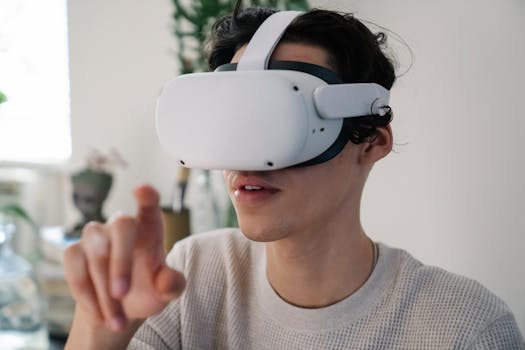Augmented Reality: Transforming Education Through Innovative Applications
In recent years, augmented reality (AR) has emerged as a groundbreaking technology that enhances the way we interact with the world around us. By overlaying digital information onto the physical environment, AR has the potential to revolutionize education, making lessons more engaging and interactive. This article explores innovative applications of augmented reality in education, showcasing how it brings lessons to life and enhances the learning experience.
The Power of Augmented Reality in Education
Augmented reality combines the real world with digital elements, allowing students to visualize complex concepts in a more tangible way. This technology can cater to various learning styles, making it an effective tool for educators. Here are some key benefits of using AR in the classroom:
- Enhanced Engagement: AR captures students’ attention and encourages active participation.
- Improved Retention: Interactive experiences help students remember information better than traditional methods.
- Real-World Applications: AR allows students to see the practical applications of their lessons.
- Accessibility: AR can provide additional support for students with different learning needs.
Innovative Applications of Augmented Reality in Education
Several innovative applications of augmented reality are currently being used in educational settings. These applications not only enhance the learning experience but also provide students with unique opportunities to explore and understand complex subjects.
1. Interactive 3D Models
One of the most exciting applications of AR is the ability to create interactive 3D models. For instance, platforms like Merge Cube allow students to hold a physical cube that, when viewed through a smartphone or tablet, reveals a 3D model of various subjects such as the solar system, human anatomy, or historical artifacts. This hands-on approach enables students to:
- Explore intricate details of complex structures.
- Visualize abstract concepts in a concrete manner.
- Engage in collaborative learning experiences.
2. Virtual Field Trips
AR can transport students to different locations around the world without leaving the classroom. Applications like Google Expeditions allow educators to take students on virtual field trips to historical sites, museums, and natural wonders. This immersive experience helps students:
- Gain a deeper understanding of cultural and historical contexts.
- Experience environments that would be difficult to visit in person.
- Foster curiosity and a love for exploration.
3. Language Learning
Augmented reality can also enhance language learning by providing contextual information and interactive experiences. Apps like AR Flashcards use AR to bring flashcards to life, allowing students to see and hear words in context. This method helps learners:
- Associate words with images and sounds.
- Practice pronunciation with immediate feedback.
- Engage in interactive storytelling to improve comprehension.
Case Studies: Success Stories in AR Education
Several educational institutions have successfully integrated augmented reality into their curricula, demonstrating its effectiveness in enhancing learning outcomes.
Case Study 1: University of Maryland
The University of Maryland implemented AR technology in its biology courses, allowing students to visualize cellular processes in 3D. The results showed a significant increase in student engagement and understanding of complex biological concepts, with 85% of students reporting improved comprehension.
Case Study 2: The British Museum
The British Museum launched an AR app that allows visitors to explore artifacts in detail. This initiative not only enhances the visitor experience but also serves as an educational tool for schools, providing students with a deeper understanding of history and culture.
Conclusion: The Future of Learning with Augmented Reality
Augmented reality is transforming education by making lessons more interactive, engaging, and accessible. As technology continues to evolve, the potential applications of AR in the classroom are limitless. By incorporating AR into educational practices, educators can create immersive learning experiences that cater to diverse learning styles and foster a deeper understanding of complex subjects.
In summary, the innovative applications of augmented reality in education are paving the way for a new era of learning. From interactive 3D models to virtual field trips and language learning tools, AR is not just a trend but a powerful educational resource that brings lessons to life. As more institutions adopt this technology, the future of education looks brighter and more engaging than ever.
